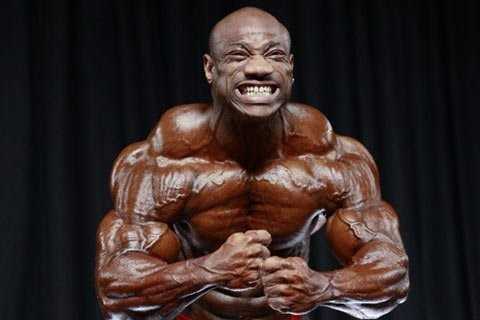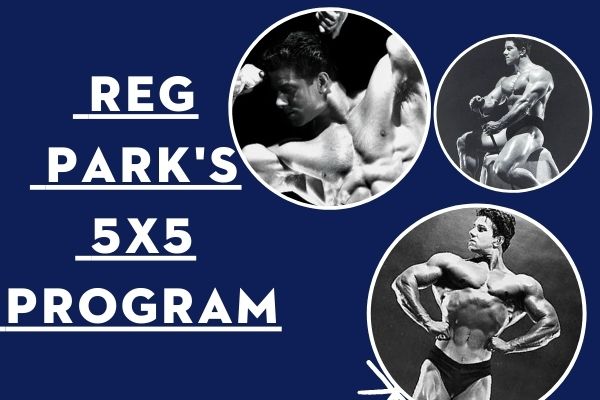“Pullovers” is a brilliant old school exercise movement which over the years has lost its sheen in this new era of high tech fitness. Not many people are seen performing it. Even if it is done it is generally the last movement in the exercise spectrum which involves some substandard dumbbell as weight just to log the exercise as “done”.
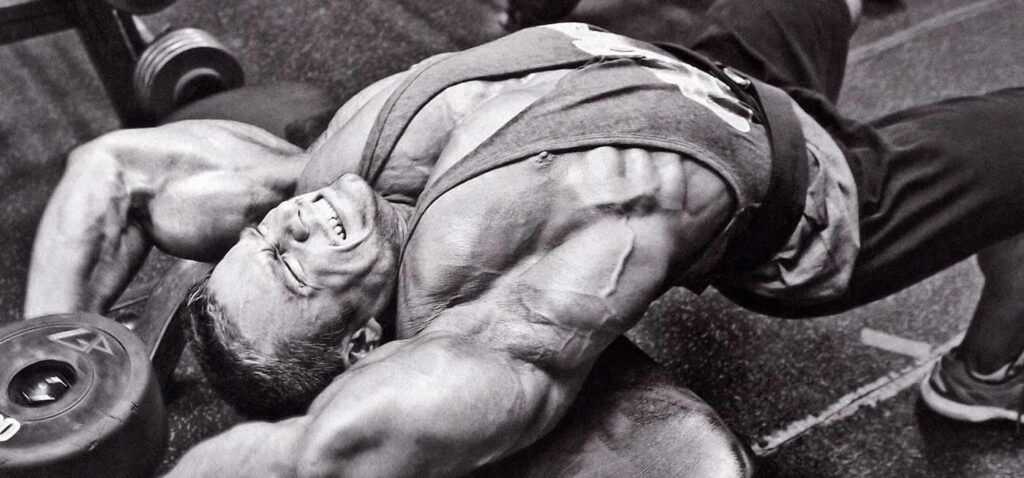
In their own words, strongmen and bodybuilders performed this exercise mainly to expand the rib cage. Apart from that it worked the supporting muscles along the way i.e. chest, back, triceps, abdominals, shoulders etc. This helped in building the thickness in the upper torso, like that commonly seen in various yesteryear bodybuilders who had phenomenal pectoral development specially when they used to hit the side chest pose where the rib cage used to expand beautifully giving their chest a massive appearance.
It was somewhere in 1911, when Alan Calvert, the founder of the famous Milo Barbell Company and Strength magazine, wrote that, “barbell pullover is the best exercise for developing a deep chest”, though he was not entirely right.
This exercise was primarily made famous initially by Arnold and his buddy athletes who used dumbbells and barbells heavily for pullover variations and had very impressive rib cage sizes.
However, it was back in the 1920s & 30s when the movement caught the attention of people, as it was being propagated as a go-to movement for a bigger chest and rib-cage development, when done along with the brutal 20-rep squats. This program advised performing 20 reps of heavy squats, followed by a light weight pullover set of generally 15 reps or so. This was said to extend the size of the rib cage.
Later, Arthur Jones took this movement to another level altogether, and called it the primary exercise for massive lat development and build the famous pullover machine at “Nautilus” which was used successfully by various world class athletes like Mike Mentzer, Casey Viator, Dorion Yates etc.
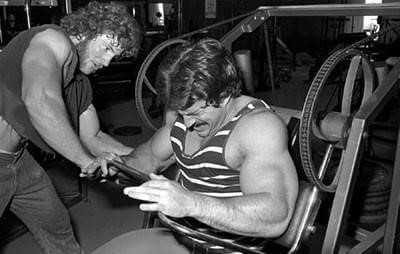
In fact, it was seen that the main muscle been worked out during the pullover movement was the latissimus dorsi or the back muscle and the upper head of the triceps. The actual movement which happens during the pullover is called the shoulder extension. Jones called the pullover machine as the “upper body squat”.
THE SCIENCE BEHIND THE MOVEMENT
Acc. to sources, the prime and secondary movers in the pullover exercise are the shoulder extensors, which include the teres major (upper lat), latissimus dorsi (lat), posterior deltoid (rear delt) and the long head of the triceps.
If you’re lying across a bench with the dumbbell supported directly over your head and you lower the dumbbell behind your head, those muscles are working but lengthening. That’s known as the eccentric, or negative, portion of the exercise. As you pull the dumbbell back to the starting point, the muscle contracts, or shortens. That part of the stroke is commonly called positive movement.
The dumbbell pullover has the greatest resistance when your arms are parallel to the floor, the lowest part of the movement. That’s because your arms form the longest lever for gravity to pull on. The closer the movement reaches the starting point, directly over your face, the less resistance, because the lever is at its shortest.

A 2014 study, compared the difference between bench press and barbell pullover exercises. The aim of the study was to compare the electromyography (EMG) activity of the following muscles: clavicular portion of pectoralis major, sternal portion of pectoralis major, long portion of triceps brachii, anterior deltoid, posterior deltoid and latissimus dorsi.
The results of this study suggested that the barbell pullover exercise cannot be indicated as an exercise for the front and upper body muscles, and that the horizontal bench press exercise is the most indicated to the training and development of this body musculature region.
The researchers suggested that, Barbell pullover is indicated as a good transition exercise from the anterior to the posterior portions of the body. With regard the adjustment of the barbell pullover in training programs, the researchers suggest its application in agonist/antagonist training to take advantage of the transitional potential offered by this exercise.
In sports, the barbell pullover could be usually prescribed as part of strength training for athletes in many sports modalities, both for performance improvement, enhancement of strength and power, and for the prevention of injuries that may result from repetitive movements above the shoulder line.
However, in a 2011 study, when eight males were tested during a barbell pullover movement and their activation state of latissimus dorsi and pectorals was checked, the barbell pullover exercise emphasized the muscle action of the pectoralis major more than that of the latissimus dorsi.
The actual movement that happens during a pullover, a we saw above, is called the shoulder extension. The pectoralis major muscles attach from the sternum, ribcage, and clavicle to the humerus (upper arm). They share the function of adducting the arm (pulling it down and in towards the body) when working with certain muscles of the back (like the latissimus dorsi).
However, the main function of the chest muscles is to pull the arm forward (from pointing out sideways to pointing forward) to the position of the “flexed” shoulder. There is small peripheral pectoralis involvement during pullovers but due to the nature of the exercise (shoulder extension) the latissimus dorsi is providing most of the working force.
A 2016 study, examined the electromyography (EMG) activation during four pullover exercise variations: conventional (CONV), straight-arm (STR), bent-arm (BENT), and conventional on unstable surface (UNS); and javelin throwing (JAVT).
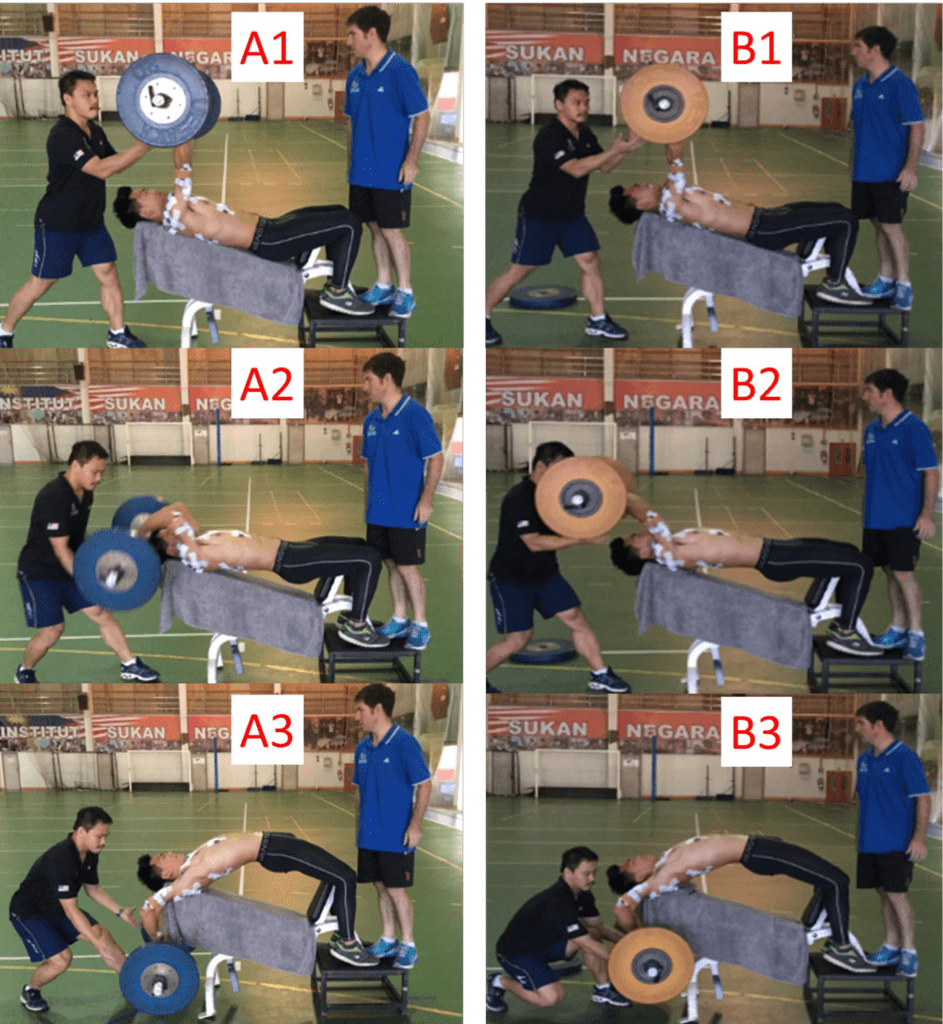
Surface EMG of five national male javelin throwers were recorded from nine muscles on the throwing-arm side: upper trapezius; anterior, middle, and posterior deltoid; triceps brachii; clavicular and sternal portions of pectoralis major; latissimus dorsi, and rectus abdominus. All throwers performed six repetitions of each pullover variation using a free-weight curl-barbell against an external load at 85% of 1-repetition maximum, while EMG signals were recorded during both the concentric and eccentric phases of the movement.
It was seen that the BENT elicited the highest peak activity of all muscles, except for the rectus abdominus which was highest during UNS. In contrast, CONV tended to produce the lowest peak muscle activation, except for the pectoral and middle deltoid muscles.
It was noteworthy that despite being the same exercise, performance on the unstable surface elicited higher peak muscle activity than CONV, except from the pectoralis muscles. Here, the level of activation depended on pullover variation, and BENT elicited the highest overall peak muscle activity.
A 2021 study, compared the electromyographic activity of pectoralis major (PM), sternal (PMS) and clavicular portions (PMC) and triceps brachii muscles, with different elbow positions in the dumbbell pullover exercise. It was seen that triceps brachii muscles showed greater activation in the dumbbell pullover exercise, regardless of elbow position (both elbow flexed and extended). Also, the dumbbell pullover with elbow extension showed greater PMS muscle activation.
A 2022 study, evaluated the individual electromyographic (EMG) activity of the pectoralis major, latissimus dorsi, anterior deltoid, triceps brachii, and rectus abdominis muscles in a barbell pullover exercise and a straight arm pulldown exercise. Twenty healthy and physically active adults performed a set of eight repetitions of each exercise against 30% of their body mass.
The barbell pullover exercise presented a higher EMG activity than the straight arm pulldown exercise in all evaluated muscles except for the latissimus dorsi and the triceps brachii. These muscles showed the highest EMG activity in the straight arm pulldown exercise. Thus, the barbell pullover exercise can highlight muscle activity in the pectoralis major, triceps brachii, and rectus abdominis muscles. However, the straight arm pulldown exercise could be a better exercise to stimulate the latissimus dorsi and triceps brachii muscles.
The belief that pullovers expanded the rib cage is false because the only flexible portion in the rib cage is the sternum or the breast bone because it is partly made of a flexible connective tissue called as cartilage. The length of sternum is genetic and you can’t make it longer by pulling it. Your torso looks bigger because of the massive back development due to this movement, not because of rib cage expansion.
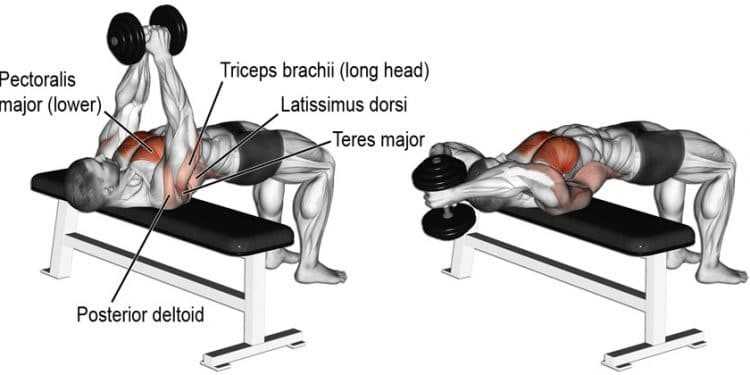
Dr. Deepak Hiwale, a sports medicine specialist, says that, “as opposed to popular notion, chest pullover is not a strictly ‘muscle-building’ exercise, rather it works more towards stretching your rib cage out, in effect increasing the capacity of your thoracic cavity – this would help cardiorespiratory endurance in the long run. Also, the ‘lifting up’ of the rib cage may help improves posture. Another important but most often overlooked function is the stretching and flattening of your core (function of the transverse abdominis muscle or the ‘inner abs’).”
Another great benefit from doing pullovers is the working of the Serratus Anterior muscle. It is one of the most important muscle when it comes to shoulder health and helps stabilize the scapula. An unstable scapula could lead to pinched nerve in the shoulder, rotator cuff issues and impingement are just some examples. Having a strong serratus will mean that you will avoid a lot of shoulder issues and keep your scapula moving properly.
CAN PULLOVERS CAUSE INJURY?
Well there have been few explanations. For e.g. “most unusual (but not uncommon) injury caused by pullovers is a tearing of the linea alba, or medium rectus. This is the line of connective tissue that holds the two vertical rows of the rectus abdominus muscle (your abs) together. Visually, the median rectus is the ‘line’ down the middle of your abdominals, between the muscle.
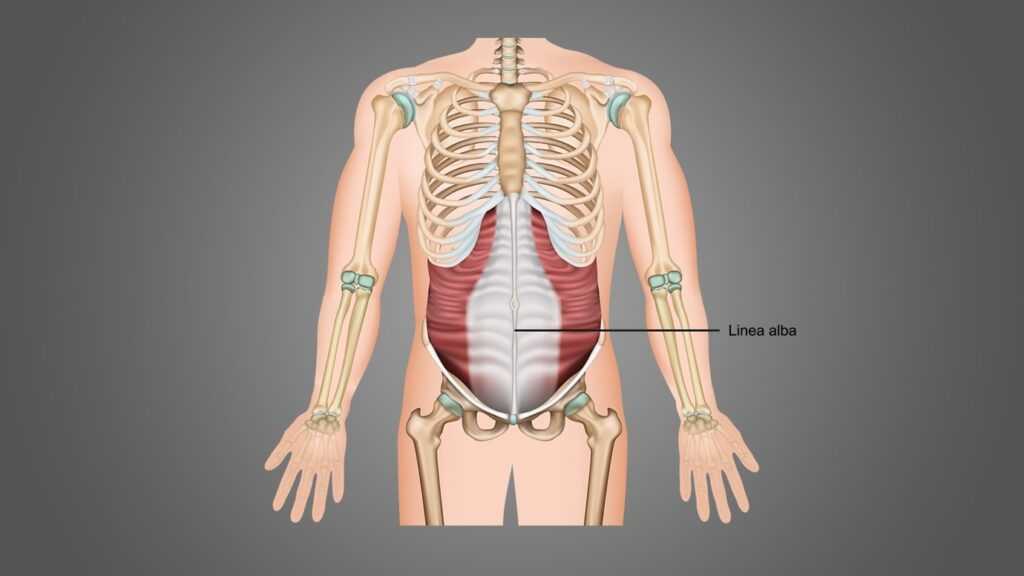
The injury is caused by overstretching that connective tissue. Consider how the movement is performed: You lie transversely across a bench, your arms extended above your head supporting a single dumbbell, and then you lower and raise the dumbbell behind your head”.
(The above write-up is taken from the 1990 article by Joseph Horrigan, who is supposedly the person to spread the injury scare about pullovers, which ultimately led to the decline in popularity of this movement. This scare continues till date.)
While doing this movement, you should drop your hips, to achieve a good stretch at the chest. At this position, it is said that due to the recommendation of breathing, can be very dangerous. As, when you try to forcefully breath in the fully stretched position during pullovers, the abdominals tend to relax your abdominal muscles. This then puts the most stress of the movement, away from abs, to the centrally placed connective tissue (median rectus). Which, though not suddenly, but over the years, with continuous strain gets weakened and get torn.
This type of an injury has only two solutions, i.e. surgery or doing nothing at all, i.e. complete rest. Though it actually doesn’t cause much pain or physical impairment.
However, I haven’t found any particular evidence of this injury as such, except from a blog link. The explanation seems right, and can be taken into consideration. But, there is no need, not to drop the hips. The issue comes, when the hips are in the lower position, and the abs are stretched, and at this time, you try and forcefully breath. This is what you are not supposed to be do. There is no breathing at the stretched position. It’s more like a Valsalva manoeuvre.
Now the injury is supposedly due to continuous strain over the years. But such movements are quite common, and literally performed daily for life in Yoga. This is called the Chakrasana or the Wheel Pose; and is said to have multiple benefits for the body, specially the spine. I haven’t heard of any long term injury because of performing such movements.
So, the injury cause finally boils down to forced breathing done at the positions, when your hips are dropped to the bottom, and the abdominals are stretched. Therefore, don’t forcefully breath at this movement.
But shouldn’t we altogether avoid dropping of the hips, to be more safe? The answer acc. to me is ‘No’.
Look, when you are doing weighted pullovers (barbell/dumbbell), and the weight is moderate to heavy; then the major issue which occurs during pullovers is lifting of hips. It’s like a see-saw, when the weight on the side of the dumbbell, pulls the other half of the body up. This can really strain the back, as people try to then push the hips down to maintain the stability of the movement. This is quite commonly seen in the straight bench pullovers.
If you have ever performed the pullover on a pullover machine, then, you would have felt a similar issue, that’s why most pullover machines have a waist belt to lock the hips down and prevent them from lifting while you are performing the movement.

That’s why you can do cross bench pullovers, and have an excellent stretch during the movement, but don’t try to forcefully breath at the bottom.
EXECUTION
People really do pullovers in different manners. But it is actually a stretching movement if you closely observe so it should be done to a full range of motion to induce maximum stretch.
There are primarily three types of pullovers:
- Straight arm pullover – arm is slightly bent at the elbow.
- Bent arm pullover – arm is bent at 90deg at the elbow.
- Machine pullover – these are considered a better way of activating the muscles of the upper torso as there is a continuous tension on the muscles of the upper body unlike in the pullovers done on the bench, because the activation of muscles during the bench pullovers is only when the arms are stretched at the bottom.
The best pullovers I found whether with dumbbells or barbells are the cross bench pullovers where your upper body and head are the only parts resting on the bench and your lower body and arms are not.
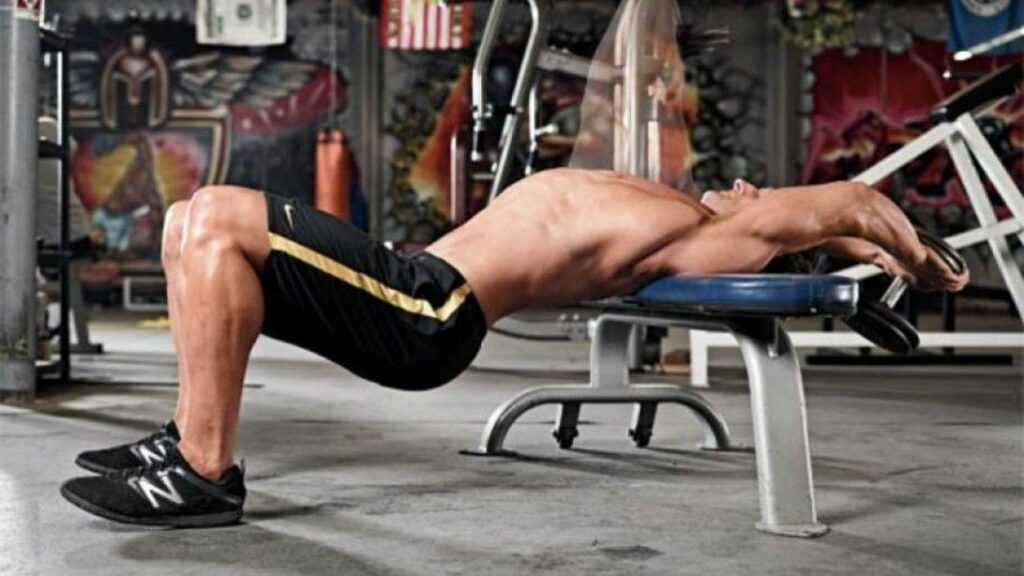
If you’re lying across a bench with the dumbbell supported directly over your head and you lower the dumbbell behind your head, those muscles are working but lengthening. That’s known as the eccentric, or negative, portion of the exercise. As you pull the dumbbell back to the starting point, the muscle contracts, or shortens. That part of the stroke is commonly called positive or the concentric motion.
Keep the arms in slightly bent position. Too much bend in the elbow will turn it into more of a triceps exercise.
Always start with a moderate weight to initially get a full range of motion and then increase weight. While lowering the weight, take a deep breath and hold the air as you lower the weight. This will help you in increasing the depth in stretch. Keep your hips and head down during the movement. You would really feel your muscles working harder when your hips are down.
Don’t overstretch at the bottom stretched position. This can be risky for your shoulders. Feel the back and chest muscles and keep the dumbbell in control, throughout the movement.
I personally take the pullover, with either chest or back routine, mainly in a superset form. This gives a phenomenal pump in the upper body, and maximizes the intensity of the workout.

